
Building a road bike that can withstand the test of time and terrain is a dream for many cycling enthusiasts. With the emergence of carbon as a preferred material for bike frames, achieving this goal has become more accessible than ever. Carbon road bike frames offer an unparalleled combination of strength, durability, and lightweight performance, making them ideal for creating a road bike that excels in both endurance and speed. 1. Start with a High-Quality Carbon Frame The heart of any durable road bike is its frame. Carbon road bike frames are known for their exceptional strength-to-weight ratio, vibration damping properties, and corrosion resistance, which contribute to their longevity and resilience against various terrains. When selecting a carbon frame, consider factors such as frame geometry, which influences the bike's handling and comfort, and the carbon layup process, which affects the frame's overall strength and stiffness. 2. Choose the Right Components The components you select to complement your carbon frame significantly impact your bike's performance and durability. Wheels: Look for carbon or high-quality aluminum wheels that offer a balance between aerodynamics, weight, and strength. A robust set of wheels can handle high speeds and rough terrains without compromising on performance. Drivetrain: Opt for a reliable drivetrain system that offers smooth shifting and durability. Systems from reputable brands can withstand thousands of miles of riding with minimal maintenance. Brakes: Whether you choose rim brakes or disc brakes, ensure they provide consistent stopping power in all conditions. Disc brakes, in particular, offer superior performance in wet and muddy conditions, adding to the bike's versatility. Tires: Select tires that match your riding conditions. For a road bike that withstands various terrains, consider slightly wider tires with puncture-resistant technology for added durability and grip. 3. Pay Attention to Detail Small details can make a big difference in building a road bike that lasts. Cables and Housing: Use high-quality cables and housing to ensure smooth operation of brakes and gears. Regularly inspect and replace them to prevent performance degradation over time. Bearings: Invest in sealed bearing hubs, bottom brackets, and headsets to protect against dirt, dust, and moisture, ensuring smooth rotation and reducing wear. Handlebar Tape: Choose durable and comfortable handlebar tape to absorb vibrations and improve grip, enhancing control and reducing fatigue on long rides. 4. Regular Maintenance and Upkeep Even the strongest road bike requires regular maintenance to stay in top condition. Cleaning: Regularly clean your bike to remove dirt and grime that can wear down components. Pay special attention to the drivetrain and braking surfaces. Lubrication: Keep the chain and other moving parts well-lubricated to reduce friction and prevent premature wear. Inspection: Periodically inspect your bike for signs of wear or damage, including checking the frame for cracks, testing the brake pads for wear, and ensuring all bolts are tightened to the correct specifications. 5. Customization for Comfort and Efficiency Customizing your bike to fit your body and riding style can enhance comfort and efficiency, contributing to the bike's longevity by reducing strain on both the rider and the bike. Fit: Consider getting a professional bike fit to adjust the saddle height, handlebar position, and stem length to your measurements, improving riding comfort and efficiency. Accessories: Add accessories like mudguards or fenders to protect against road spray, and consider mounting options for water bottles and tool kits for longer rides. Building a strong road bike that withstands the test of time and terrain requires careful selection of materials and components, with a carbon road bike frame providing an excellent starting point. By combining high-quality components with regular maintenance and personalized adjustments, you can create a durable, efficient, and comfortable road bike ready for whatever adventures lie ahead. Remember, the key to a long-lasting road bike lies not just in its construction but also in how well it is cared for and maintained over the years.
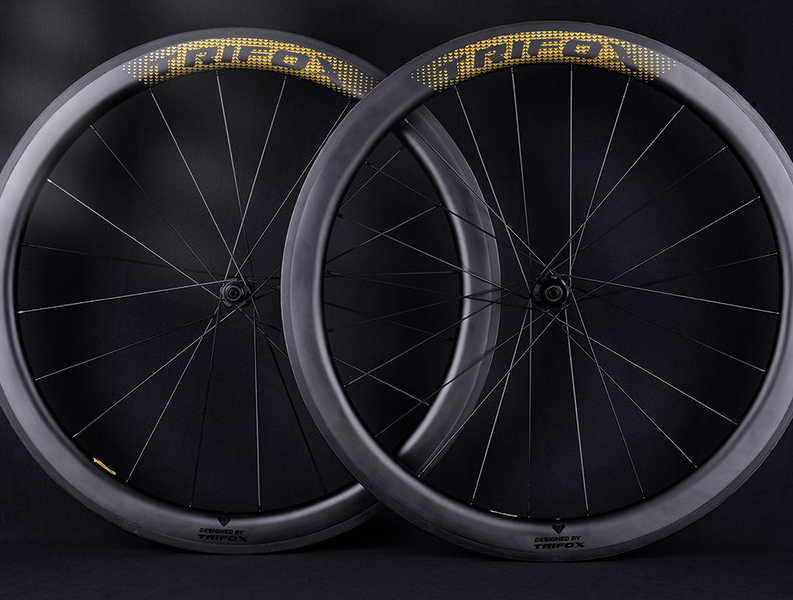
When it comes to upgrading your bike, choosing the right wheels can make a significant difference in your riding experience. Two popular materials dominate the market: aluminum and carbon. Both have their unique advantages, catering to different types of cyclists and needs. Understanding Aluminum Wheels Aluminum wheels have long been the go-to choice for many cyclists, from beginners to seasoned enthusiasts. They are known for their durability, affordability, and versatility. Aluminum alloy, used in wheel construction, offers a good balance of strength and weight, making these wheels suitable for a wide range of riding conditions. Advantages of Aluminum Wheels: - Durability: Aluminum wheels can withstand a considerable amount of abuse, making them ideal for rough roads and varied terrains. - Cost-Effectiveness: Generally more affordable than their carbon counterparts, aluminum wheels are an excellent option for those on a budget. - Braking Performance: With advancements in brake track surface technology, aluminum wheels provide consistent braking in various conditions. Exploring Carbon Wheels Carbon wheels have surged in popularity, particularly among performance-focused cyclists and racers. Made from carbon fiber, these wheels are designed to offer superior stiffness, aerodynamics, and a noticeable reduction in weight compared to aluminum wheels. Advantages of Carbon Wheels: - Weight Savings: Carbon wheels are significantly lighter, which can improve climbing efficiency and acceleration. - Aerodynamics: The ability to mold carbon fiber into aerodynamic shapes helps reduce drag, offering speed advantages, especially at higher velocities. - Ride Quality: Carbon can be engineered to absorb road vibrations, providing a smoother ride over harsh surfaces. Deciding Between Aluminum and Carbon Wheels The choice between aluminum and carbon wheels depends on several factors including your budget, riding style, and performance goals. Here's how to decide: 1. Consider Your Budget: If cost is a primary concern, aluminum wheels offer great value and performance at a more accessible price point. However, if you're willing to invest in potential performance gains, carbon wheels could be worth the extra expenditure. 2. Assess Your Riding Style: For aggressive riders or those frequently tackling rough terrains, the durability of aluminum might be preferable. Conversely, if you prioritize speed, efficiency, and enjoy riding on well-maintained roads or racing, the lightweight and aerodynamic benefits of carbon wheels might align better with your needs. 3. Evaluate Performance Goals: Cyclists aiming to shave off seconds in races or seeking every possible advantage in climbing and acceleration might find carbon wheels more appealing. Meanwhile, recreational riders or those less concerned with competitive performance may find aluminum wheels perfectly adequate. 4. Maintenance and Longevity Considerations: Carbon wheels, while strong, can be more susceptible to impact damage and usually require more careful handling and maintenance. Aluminum wheels are often seen as more robust for everyday use and mixed conditions. 5. Braking Performance: Traditionally, aluminum wheels have offered more reliable braking, especially in wet conditions. However, advancements in carbon wheel manufacturing have significantly improved carbon braking performance, though differences can still exist. 6. Aesthetic and Feel: Some cyclists prefer the look and feel of carbon wheels on their bike. The aesthetics and perceived prestige, along with the distinctive sound of carbon wheels, can also influence the decision. Conclusion Deciding between aluminum and carbon wheels ultimately comes down to personal preferences, priorities, and what you hope to achieve with your cycling experience. Both options have their merits, and advancements in technology continue to blur the lines between them. Whether you opt for the reliability and value of aluminum or the performance edge and sophistication of carbon, ensure that your choice complements your cycling style and goals. Remember, the best wheel is the one that meets your needs and brings you the most enjoyment on the road.
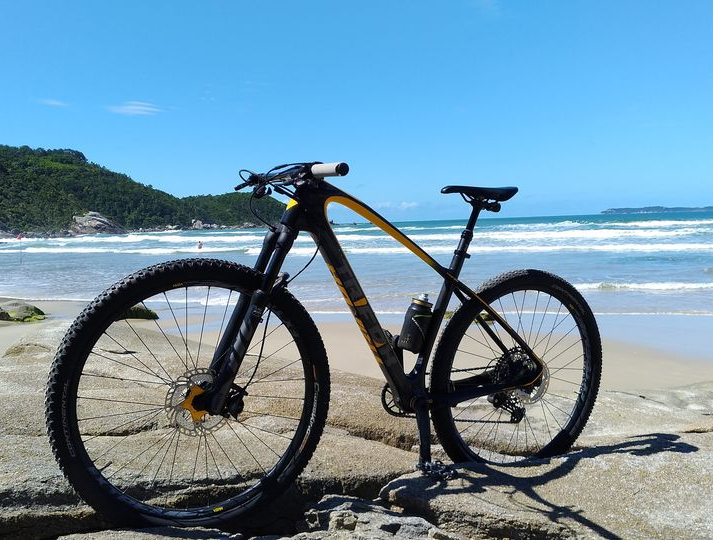
how to tune your bicycle for optimal performance and smooth riding based on general knowledge and principles of bicycle maintenance. Understanding the Basics of Bicycle Tuning Tuning a bicycle is akin to fine-tuning an instrument. Just as a well-tuned guitar produces harmonious notes, a well-tuned bicycle offers a smooth, efficient, and enjoyable ride. This process involves adjusting, cleaning, and replacing parts as necessary to ensure everything works harmoniously. Cleaning Your Bike A clean bike is the foundation of good performance. Dirt, grime, and debris not only make your bike look bad but can also impede its functionality by getting into the moving parts. 1. Wash Your Bike: Use a gentle cleaner and a soft brush to clean the frame, wheels, and components. Avoid high-pressure hoses that can force water into bearings. 2. Degrease the Drivetrain: Apply a degreaser to the chain, cassette, and derailleurs. Use a specific brush to scrub these parts clean. 3. Lubricate: After cleaning, apply lubricant to the chain, derailleurs, and any other moving parts. This reduces friction and wear, improving performance. Checking and Adjusting the Brakes Brakes are crucial for safety and control. They should engage smoothly and evenly. 1. Check Brake Pads: Worn brake pads need replacing. There should be a visible tread and no metal showing. 2. Adjust Brake Cables: If brakes feel spongy or too tight, adjust the tension of the brake cables via the barrel adjusters on the levers or calipers. 3. Center the Brake Calipers: Ensure the calipers are centered so that both pads contact the rim at the same time. Tuning the Gears Smooth shifting is essential for an enjoyable ride. Incorrectly adjusted gears can cause skipping, noise, and inefficient pedaling. 1. Check Derailleur Alignment: The front and rear derailleurs must be correctly aligned with the chainrings and cassette. 2. Adjust Limit Screws: These prevent the chain from falling off the cassette or chainring. Adjust them so the chain shifts smoothly across all gears without overshifting. 3. Cable Tension: Similar to brakes, gear shifters use cables that may stretch over time. Adjust the tension to ensure crisp shifting. Ensuring Wheel Performance True wheels are vital for a smooth ride, efficient pedaling, and safe braking. 1. Check Wheel True: Spin each wheel and watch for side-to-side wobbles or vertical hops. Minor adjustments can be made with a spoke wrench by tightening or loosening spokes. 2. Inspect Tires: Look for signs of wear, cuts, or embedded debris. Ensure they're inflated to the pressure indicated on the tire sidewall. 3. Bearings: Check the smoothness of the wheel, bottom bracket, and headset bearings. Any roughness or play might require adjustment or replacement. Fine-Tuning for Comfort and Efficiency The right setup can significantly impact your comfort and efficiency on the bike. 1. Saddle Height and Position: Adjust your saddle height so your leg has a slight bend when the pedal is at its lowest point. Move the saddle forward or backward to optimize your reach to the pedals. 2. Handlebar Height and Reach: Adjusting the handlebars can help reduce strain on your arms, neck, and back. This is largely personal preference and what feels comfortable for long rides. Regular Inspection and Maintenance Regularly inspect your bike for any signs of wear or damage. Components like chains, cassettes, and brake pads wear out over time and need replacing. Keeping a maintenance schedule helps prevent unexpected issues and ensures your bike is always ready for a ride. Conclusion Tuning your bicycle for optimal performance isn't just about making it faster; it's about ensuring safety, efficiency, and enjoying every ride to its fullest. While professional tune-ups are invaluable, understanding how to maintain and adjust your bike can enhance your cycling experience and deepen your connection to your ride. Whether you’re preparing for a race, gearing up for a leisurely ride, or commuting, a well-tuned bike is your best companion on the road. Remember, the key to a smooth and enjoyable ride is regular maintenance and tuning. By following these steps, you'll ensure your bike performs at its best, providing many miles of joyful and efficient riding.
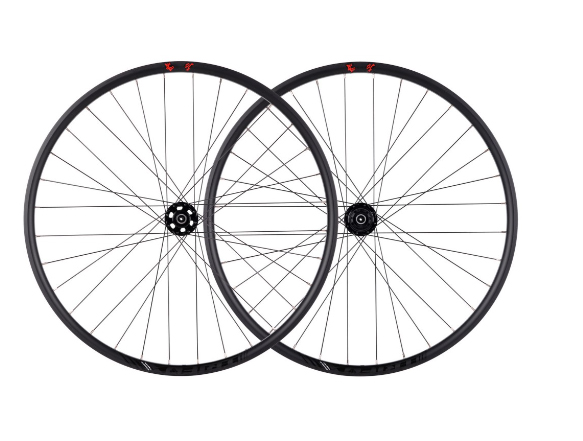
Lacing your own bike wheels is a rewarding project that can enhance the durability and performance of your ride. One popular method for lacing wheels is the "2 Cross" (2X) pattern. This technique involves crossing each spoke over two others on its way from the hub to the rim, striking a balance between strength and flexibility. Understanding the Components Before we dive into the lacing process, it's important to familiarize yourself with the components involved: - Hub: The central part of the wheel that rotates around the axle. - Rim: The outer circular part of the wheel. - Spokes: The rods connecting the hub to the rim. - Nipples: The threaded receivers attached to the rim that hold the spokes in place. Preparing Your Workspace Ensure you have a clean, well-lit workspace with enough room to comfortably work on your wheel. Organize your spokes and nipples so they're easily accessible. Step 1: Inserting the First Set of Spokes Begin by inserting a spoke into every other hole in the hub, making sure they're all facing the same direction. Next, thread these spokes through holes in the rim. The first spoke should be attached to a hole just to the right of the valve hole for ease of access and symmetry. As you insert the spokes, attach the nipples loosely to hold them in place but do not tighten them yet. Step 2: Adding the Second Set of Spokes Now, flip the wheel over to work on the opposite side of the hub. Insert the next set of spokes into every other hole on the hub, ensuring they alternate with the first set you installed. These spokes will also go into every other hole on the rim, but you'll need to start one hole over from your original starting point to ensure the proper alignment for the 2 Cross pattern. Step 3: Lacing the Cross Pattern This step is where the 2 Cross pattern comes to life. Take a spoke from the side of the hub you're currently working on and cross it over two spokes already attached to the rim, then insert it into the next available hole in the rim. It's crucial to maintain consistency in the crossing pattern to ensure the wheel's strength and balance. Step 4: Completing the Wheel Continue the process until all spokes are inserted. Remember, each spoke should cross over two others before being secured to the rim. Once all spokes are in place and loosely secured with nipples, you can begin the process of tightening and truing the wheel. Tightening and Truing Tightening and truing the wheel are critical steps in ensuring your wheel is durable, strong, and rides smoothly. Begin by gradually tightening each nipple evenly around the wheel. Use a truing stand if available, or you can true the wheel by eye, adjusting for any lateral (side-to-side) or radial (up-and-down) movement. The goal is to eliminate wobbles while ensuring the wheel remains centered. Tips for Success - Be Patient: Wheel lacing is a meticulous process that shouldn't be rushed. Take your time to ensure each spoke is correctly placed and tensioned. - Check Your Work: Regularly check your progress to ensure the spokes are correctly crossing and the wheel is taking shape as expected. - Even Tension: Maintaining even tension across all spokes is crucial for the wheel's durability and performance. Uneven tension can lead to wheel instability and premature failure. Final Thoughts Lacing your wheels using the 2 Cross method is a great way to customize your bike and improve its durability. While the process may seem daunting at first, with patience and practice, you'll be able to lace your wheels like a pro. Remember, the key to a successful wheel build is precision and attention to detail. By following this guide, you'll not only gain a deeper understanding of how your bike works but also enjoy the satisfaction of riding on wheels you've built yourself. Whether you're a seasoned cyclist looking to upgrade your ride or a hobbyist looking to expand your skills, wheel lacing is a valuable skill to have in your cycling repertoire.
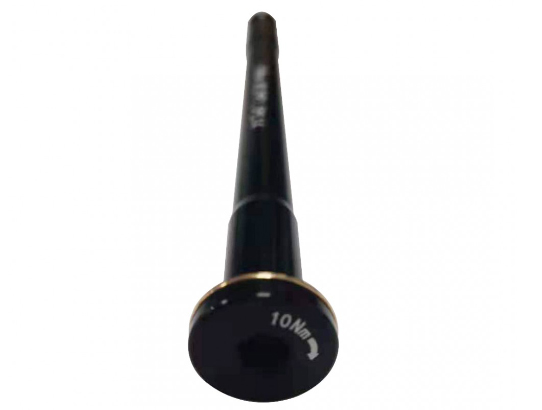
Ensuring a leak-free ride when using tubeless tires largely depends on the correct application of rim tape. This essential component not only seals the spoke holes on your rim but also provides a smooth surface for the tire to adhere to, making it crucial for preventing air loss and maintaining tire pressure. Mastering the art of applying tubeless tire rim tape can seem daunting at first, but with the right guidance, you can achieve a perfect setup that will enhance your cycling experience. 1. Gather Your Materials Before starting, ensure you have the necessary materials on hand: - Tubeless rim tape of the correct width and length for your rims - Scissors or a sharp blade - Alcohol wipes or a clean cloth and isopropyl alcohol - A tubeless valve - Optional: Heat gun or hairdryer 2. Prepare the Rim The key to a successful tape application starts with a clean rim. Use alcohol wipes or a cloth dampened with isopropyl alcohol to thoroughly clean the rim's surface, focusing on the area where the tape will adhere. This removes grease, dirt, and old adhesive residues, ensuring a strong bond between the tape and the rim. Allow the rim to dry completely before proceeding. 3. Choose the Correct Tape Width Selecting the right tape width is crucial for an effective seal. The tape should cover the entire inner width of the rim, extending slightly up the sidewalls but without encroaching on the area where the tire bead sits. Typically, the tape width should be 2-3mm wider than the internal width of your rim. This ensures complete coverage of the spoke holes and provides a sufficient sealing surface. 4. Start Applying the Tape Begin by locating the valve hole on your rim. Position the end of the tape approximately 10cm (about 4 inches) to one side of this hole, pressing the tape firmly onto the rim. Slowly unroll the tape, stretching it slightly as you go to ensure it lays flat and adheres tightly. It's important to keep tension on the tape to avoid wrinkles or air bubbles, which could compromise the seal. As you apply the tape, make sure it's centered and extends slightly up the sidewalls. Use your fingers or a small roller to smooth out the tape and firmly press it into place, paying extra attention to the area around the spoke holes. 5. Overlap and Cut Once you've made a complete circuit of the rim, overlap the starting point by at least 15cm (about 6 inches) to ensure a secure seal. Cut the tape cleanly with scissors or a sharp blade. Firmly press down on the overlapping section to eliminate any potential gaps. 6. Create a Valve Hole Locate the valve hole beneath the newly applied tape. Using a small, sharp object, carefully make a hole through the tape at this location. The hole should be just large enough to fit the valve stem through—too large of a hole can lead to leaks. Insert the tubeless valve through the hole, ensuring a tight fit. The rubber base of the valve should sit flush against the tape, creating an airtight seal. 7. Seal and Finish For added durability and to ensure the tape adheres securely to the rim, consider gently heating the taped area with a heat gun or hairdryer. This softens the adhesive, allowing it to bond more deeply into the rim's surface. Once heated, go over the tape once more with firm pressure to ensure it's fully adhered. After the tape is applied and the valve is in place, mount your tubeless tire onto the rim and inflate it according to the manufacturer's recommendations. The air pressure will help push the tape into place, further enhancing the seal. 8. Test for Leaks Finally, it's crucial to test your setup for leaks. Submerge the rim and tire in water or spray soapy water along the rim and valve areas. Watch for any air bubbles that indicate a leak. If leaks are found, deflate the tire and reapply pressure to the tape or consider adding an additional layer of tape if necessary. Applying tubeless tire rim tape correctly is vital for achieving a leak-free ride. By following these steps, you can ensure a robust and durable seal that will hold up under the rigors of your cycling adventures. Proper preparation, careful application, and thorough testing are the keys to success, allowing you to enjoy the benefits of tubeless tires with confidence.
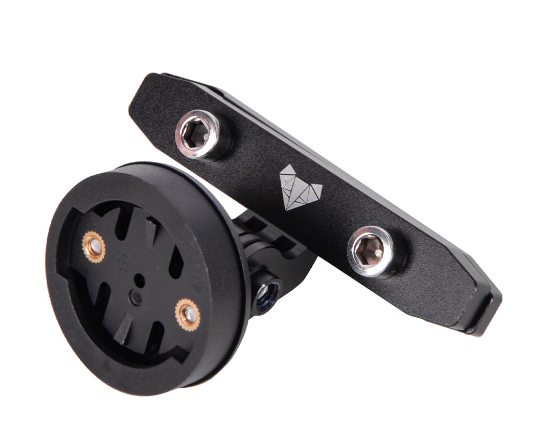
A bike board, often referred to as a bikepacking or adventure board, is essentially a platform that allows cyclists to attach gear, supplies, or even additional seating to their bikes. This versatile accessory makes it possible to transform your regular bike into a cargo-carrying beast, perfect for those who love to explore the great outdoors. Choosing the Right Bike Board 1. Consider Your Bike Type and Size The first step in selecting a bike board is to consider the type of bike you have. Different boards are designed to fit various types of bikes such as mountain bikes, road bikes, and touring bikes. Additionally, ensure that the board is compatible with the size of your bike frame to avoid any fitting issues. 2. Evaluate the Board's Weight Capacity Before making a purchase, check the weight capacity of the bike board. It's crucial to choose a board that can handle the load you plan to carry. Overloading a bike board can lead to handling difficulties and potentially damage your bike. 3. Material Matters Bike boards are typically made from materials like aluminum, plastic, or carbon fiber. Aluminum boards are durable and relatively lightweight, making them a popular choice for many cyclists. Plastic boards may be lighter but less durable, whereas carbon fiber offers the best strength-to-weight ratio but at a higher price point. 4. Ease of Installation Look for a bike board that offers easy installation and removal. Some boards come with quick-release systems, allowing you to attach or detach the board without tools, which is especially handy if you're frequently switching between cargo-carrying and standard biking modes. Using Your Bike Board for Outdoor Adventures 1. Packing Smart When loading up your bike board, distribute the weight evenly to maintain balance. Heavier items should be placed closer to the bike frame, while lighter items can be positioned further out. This helps in keeping the bike stable and manageable, even on rough terrains. 2. Securing Your Load Use bungee cords, straps, or cargo nets to secure your gear to the bike board. Ensure everything is tightly fastened to prevent items from shifting or falling off during your ride. It's also a good idea to check the security of your load periodically, especially after riding through bumpy sections. 3. Protecting Your Gear Consider using waterproof bags or covers to protect your gear from the elements. Sudden rain showers or muddy trails can quickly soak or dirty your belongings, so it's best to be prepared. 4. Planning Your Route With additional weight on your bike, it's important to plan your route accordingly. Opt for paths that are suitable for the added load, avoiding overly technical trails that could pose a challenge. Remember, the goal is to enjoy the journey as much as the destination. 5. Practice Makes Perfect Before embarking on a long adventure, take a few short trips with your loaded bike board to get used to the handling differences. Practice maneuvering, braking, and turning with the extra weight. This will help you feel more confident and safe during your outdoor excursion. 6. Respect the Environment While exploring the great outdoors, always follow Leave No Trace principles. Pack out what you pack in, minimize your impact on the environment, and respect wildlife and other trail users. 7. Be Prepared for Emergencies Carry a basic repair kit, including tools for fixing flat tires, adjusting the bike board, and tightening bolts. Also, bring a first aid kit, extra water, and snacks. Being prepared can make all the difference in handling unexpected situations. Choosing and using a bike board for your next outdoor adventure opens up a world of possibilities for exploration and fun. By carefully selecting the right board for your needs and following these tips for effective use, you'll be well-equipped to embark on memorable journeys across diverse landscapes. Whether you're planning a multi-day bikepacking trip or a day-long excursion, a bike board can enhance your adventure, allowing you to carry everything you need to explore the great outdoors to its fullest.

In the world of cycling, the smallest components often make the most significant difference in performance and safety. One such component is the thru-axle skewer, a critical piece of hardware that secures your wheels to your bike, ensuring stability, improving performance, and enhancing rider safety. Understanding Thru-Axle Skewers Thru-axle skewers are an evolution from the traditional quick-release system, offering a more robust and reliable method for securing bike wheels. Unlike quick releases, which clamp onto the bike frame using a cam mechanism, thru-axles thread directly into the bike frame or fork. This design significantly improves wheel stiffness and bike handling, especially in demanding conditions like mountain biking or road racing. Benefits of Upgrading to a Thru-Axle Skewer Enhanced Stability and Control: The rigidity provided by a thru-axle skewer reduces flex in the wheel, allowing for more precise control over rough terrain or during high-speed descents. Improved Safety: Thru-axles offer a more secure connection between the wheel and the bike frame, reducing the risk of the wheel becoming dislodged during a ride. Better Performance: The added stiffness helps to transfer power more efficiently from the rider to the wheels, improving acceleration and climbing performance. Compatibility with Modern Disc Brakes: Thru-axles ensure that wheels are precisely aligned, which is crucial for the optimal performance of disc brake systems. Choosing the Right Thru-Axle Skewer When shopping for a thru-axle skewer, consider the following factors: Compatibility: Ensure that the skewer is compatible with your bike's frame and fork dimensions. The Trifox Alloy Front Thru Axle Skewer, for example, is designed for boost forks, a common specification for modern mountain bikes. Material: Look for lightweight yet durable materials. The Trifox skewer is made from high-quality alloy, offering an excellent balance of strength and weight reduction. Ease of Use: Choose a skewer that can be easily installed and removed without requiring excessive force or tools. This is particularly important for cyclists who travel with their bikes or those who might need to remove wheels frequently for maintenance. Installing Your Thru-Axle Skewer Step 1: If replacing an existing skewer, first remove the old axle by unscrewing it from the frame or fork. Step 2: Insert the new thru-axle skewer through the hub of the wheel. Align the wheel within the dropouts of the fork or frame. Step 3: Thread the skewer into the receiving end of the dropout. Ensure it is threaded straight to avoid cross-threading. Step 4: Tighten the skewer according to the manufacturer's recommended torque settings. For the Trifox Alloy Front Thru Axle, a snug fit that allows the lever to close firmly without excessive force is ideal. Step 5: Perform a safety check by ensuring the wheel is securely attached and does not wobble or shift within the dropouts. Upgrading to a high-quality thru-axle skewer, like the Trifox Alloy Front Thru Axle Skewer for Boost Fork, is a straightforward yet effective way to enhance your bike's performance and safety. By choosing the right skewer for your bike and ensuring it's properly installed, you can enjoy increased stability, improved control, and a better overall riding experience. Whether you're a competitive racer or a weekend warrior, investing in the right components can make all the difference in your cycling adventures.
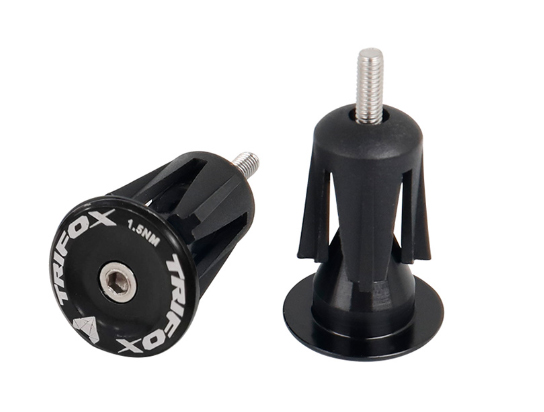
Choosing and installing the right handlebar parts for your bike is akin to selecting the perfect steering wheel for a car. It's not just about aesthetics; it's about comfort, control, and safety. The right handlebar setup can transform your riding experience, whether you're navigating urban streets, tackling rugged mountain trails, or racing on a sleek road bike. Understanding Handlebar Parts Before diving into the selection and installation process, it's crucial to understand the key components that make up your bike's handlebar system: 1. Handlebars: The main part that you hold onto while riding. They come in various shapes and sizes, tailored to different types of biking. 2. Stem: The component that connects the handlebars to the bike's fork steerer tube, affecting the bike's handling and rider's position. 3. Grips or Bar Tape: Materials wrapped around the handlebars to provide cushioning and grip for the rider's hands. 4. Bar Ends : Optional extensions at the ends of the handlebars, offering additional hand positions. Choosing the Right Handlebar Parts 1. Consider Your Riding Style The first step in choosing the right handlebar parts is to consider your primary riding style. Road cyclists may opt for aerodynamic bars that allow for multiple hand positions, while mountain bikers might prefer wider bars for better control over rough terrain. Touring cyclists, on the other hand, might value comfort over long distances and choose handlebars that facilitate an upright posture. 2. Select the Right Material Handlebars and stems are made from various materials, including aluminum, carbon fiber, and steel. Aluminum offers a good balance between strength, weight, and cost, making it a popular choice for many cyclists. Carbon fiber is lighter and can absorb road vibrations better but is more expensive. Steel is durable and has a classic look but is heavier. 3. Pay Attention to Size and Geometry The size and geometry of your handlebars significantly impact your bike's handling and your comfort. Handlebar width should roughly match your shoulder width for optimal control and comfort. The shape of the bars, such as the reach and drop (for road bikes), also affects your riding position and aerodynamics. Installing Handlebar Parts Tools You'll Need - Allen keys/hex wrenches - Tape measure - Handlebar tape or grips - Torque wrench (optional but recommended) Installation Process 1. Installing the Stem: If you're replacing the stem, loosen the bolts on the old stem and remove it from the steerer tube. Slide the new stem onto the steerer tube, ensuring it's at your desired height and angle. Tighten the bolts evenly but do not over-tighten. 2. Attaching the Handlebars: Place the handlebars in the stem clamp, adjusting them to your preferred angle and position. Most stems have four clamp bolts—tighten them in a cross pattern to ensure even pressure. Use a torque wrench if possible to avoid damaging the bars or stem. 3. Applying Grips or Bar Tape: For grips, simply slide them onto the ends of the handlebars and secure them according to the manufacturer's instructions. For bar tape, start wrapping at the end of the handlebars, keeping the tape tight and overlapping each wrap slightly. Finish by securing the tape with electrical tape or the provided adhesive strip. Final Tips - Always refer to the manufacturer's instructions for specific details and torque settings. - Regularly inspect your handlebar setup for signs of wear, damage, or loose components. - Consider professional fitting services if you're unsure about the best setup for your needs. By carefully selecting and correctly installing the right handlebar parts for your bike, you can enhance your riding experience, improve bike control, and enjoy greater comfort on your cycling adventures. Whether you're a seasoned cyclist or a beginner, the right handlebar setup can make all the difference in your ride.
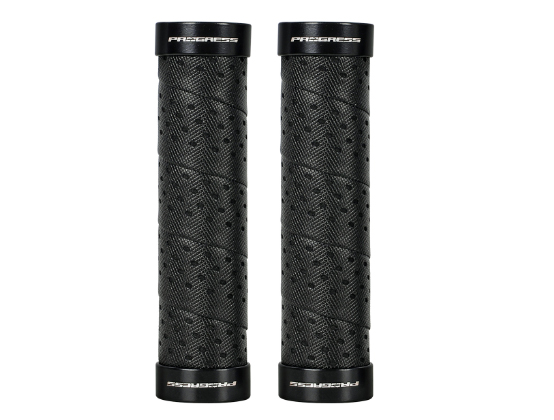
Cycling, for many, is not just a sport or a mode of transport—it's a passion, an escape, and a way to connect with the world. However, as any avid cyclist will tell you, the quality of your ride can significantly depend on the accessories you choose. Among these, slip cycling accessories, particularly handlebar grips, play a crucial role in enhancing your cycling experience. The Importance of High-Quality Handlebar Grips The connection between the rider and their bike largely occurs through two critical points: the pedals and the handlebars. While much attention is given to pedal efficiency and comfort, the importance of handlebar grips should not be underestimated. Quality grips prevent your hands from slipping, even in wet or sweaty conditions, providing better control and reducing fatigue. This is especially crucial for mountain bikers, who often navigate rough terrains and require superior grip to maintain control. Features to Look for in Slip Cycling Accessories When shopping for slip-resistant cycling accessories, there are several features to consider: Material: The grip material plays a significant role in comfort and slip resistance. Rubber grips, for example, offer excellent shock absorption and are naturally slip-resistant. Silicone grips are another popular choice, known for being lightweight and providing a soft touch. Ergonomics: Ergonomically designed grips can greatly reduce hand fatigue and discomfort during long rides. These grips are shaped to fit the contours of your hand, distributing pressure more evenly. Texture: The grip texture can also affect slip resistance. Some grips feature patterns or ridges to enhance grip, even when wet. Lock-On Feature: For mountain biking or rough terrain cycling, grips with a lock-on feature can be invaluable. These grips have a locking mechanism that prevents them from twisting or slipping off the handlebars. Upgrading Your Ride with the Right Accessories Choosing the right slip cycling accessories can make a significant difference in your overall riding experience. For instance, upgrading to high-quality handlebar grips can lead to improved bike control, reduced hand fatigue, and a safer ride. When selecting grips or other slip-resistant accessories, consider your specific needs—such as the type of cycling you enjoy and any personal preferences for material or design. Remember, the goal is to enhance your connection with your bike, making your rides more enjoyable and comfortable. Whether you're a road cyclist facing long distances or a mountain biker tackling challenging trails, the right accessories can elevate your performance and enjoyment. Conclusion Cycling is a dynamic and exhilarating activity that offers endless possibilities for adventure and exploration. By investing in high-quality slip cycling accessories, such as durable and ergonomic handlebar grips, cyclists can significantly enhance their riding experience. Not only do these accessories improve safety and control, but they also contribute to a more comfortable and enjoyable ride, regardless of the terrain. As you consider upgrading your cycling accessories, remember to prioritize functionality, comfort, and personal preference. With the right enhancements, your bike will feel like an extension of yourself, perfectly tuned to meet the challenges of the road or trail ahead.

















